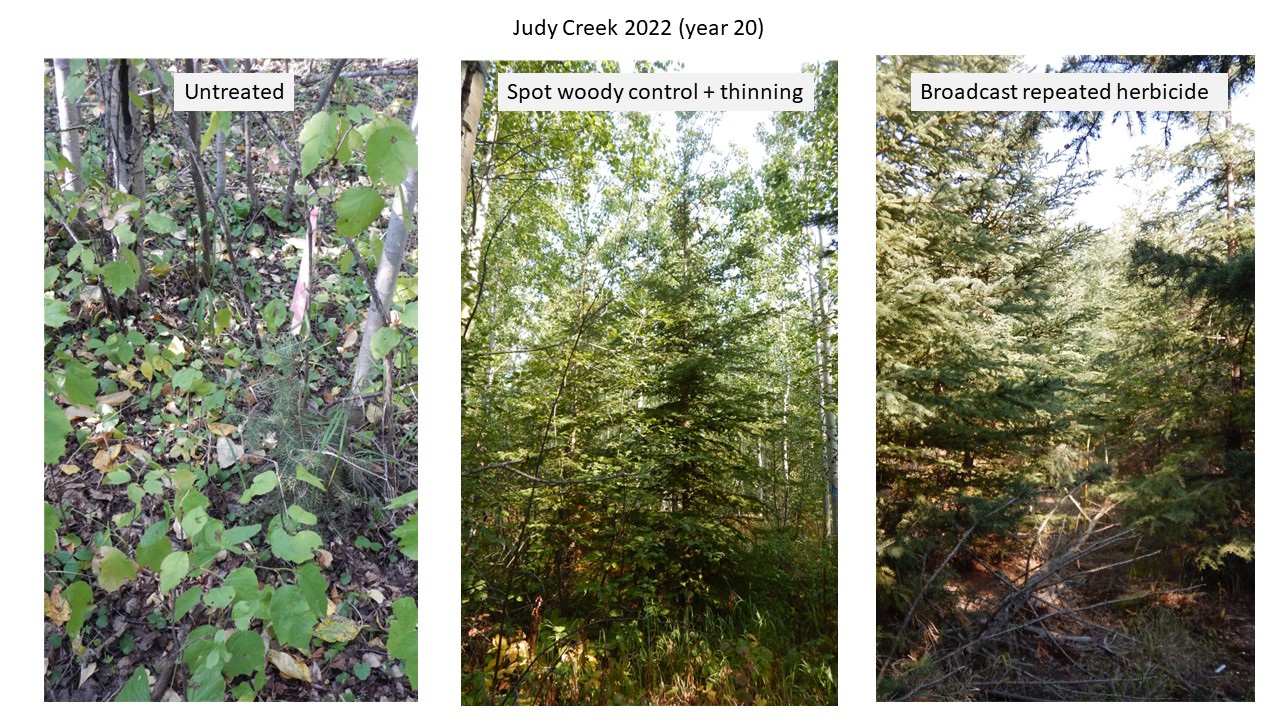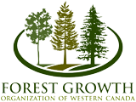
Abstract
In the absence of other treatments, regenerating intimate mixtures of aspen and white spruce by relying on natural regeneration of aspen and planting of spruce generally results in a very long spruce rotation. Spot treatment with herbicide or cutting treatments can improve growth of spruce while retaining a matrix of aspen and lead to creation of intimate mixtures of aspen and spruce. In this presentation I will present results to age 20 from the Judy Creek Mixedwood Experiment established in the Swan Hills near Blue Ridge, Alberta in 2002. The core of the study involved vegetation control within 2-m radius spots centered on spruce planted at 5-m spacing. The study also included broadcast complete, broadcast woody, and herbaceous control as well as untreated. At age 10, thinning of spot treated plots to 800, 1 200 and 2 000 stems/ha was added to the study.
In 2022, after 20 growing seasons, spruce survival ranged from 67 to 100% in the thinned radial treatments with spruce survival, DBH and height in the radial treatments being intermediate between untreated spruce growing under a dense aspen canopy and spruce growing without aspen in the treatment with broadcast repeated application of glyphosate herbicide. Repeated browsing by snowshoe hare, associated with reduced height of spruce, lead to severe reductions in spruce survival and size in the untreated, which had an average of 14 000 stems/hectare of aspen and 16% spruce survival at age 20. While spot treatment alone did not significantly affect aspen height or diameter at age 20, thinning of the aspen matrix at age 10 in spot treated stands resulted in increases in diameter of both aspen and spruce at age 20. Mixedwood Growth Model (MGM21) projections suggest that radial treatments result in spruce culmination ages that are intermediate between broadcast complete control (with vision herbicide) and untreated, with a lower conifer MAI due to the much lower spruce planting density in radial (400 stems/ha) than broadcast (1600 stems/ha) treatments together with reductions in growth of the spruce. The aspen matrix in the spot treatments can provide merchantable deciduous volume, with deciduous MAI in the unthinned spot treatment averaging 1.4 m3/ha/y in contrast to 4.0 m3/ha/y in the untreated control. In summary, results indicate that radial spot herbicide treatments can effectively improve early survival and growth of white spruce through control of aspen, shrubs, herbs, and grasses and that adding precommercial thinning can provide additional increases in growth of both aspen and spruce.
Biography

Phil Comeau is Professor Emeritus at the University of Alberta and was Professor of Silviculture and Stand Dynamics at the University of Alberta from 2000 to 2017. Phil has conducted research relating to silviculture, forest ecology, and growth and yield in western Canada. Since 2000 his research has focused on evaluating effects of spot, patch and broadcast treatments in boreal mixedwood stands, including effects on yield, stand structure, biodiversity and drought resilience. Phil served as chair of the Western Boreal Growth and Yield (WESBOGY) project team from 2003 to 2023 and has been involved in development of the Mixedwood Growth Model. He received of the CIF (Canadian Institute of Forestry) Tree of Life Award (Rocky Mountain Section) in 2014 and the CIF Scientific Achievement Award in 2016.






